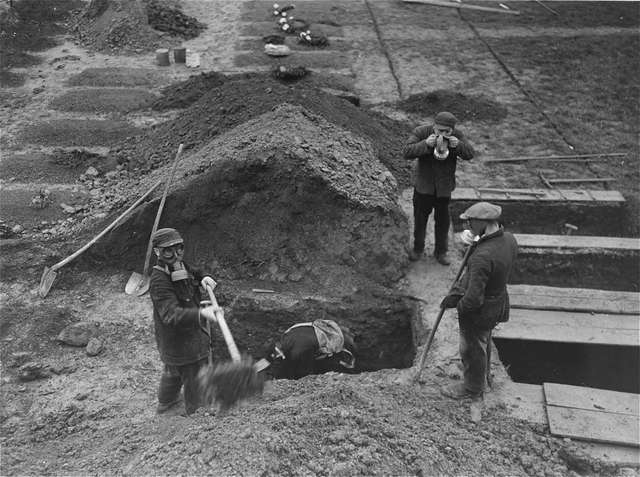Decentralised »euthanasia«
In August 1941, Adolf Hitler (1889–1945) ordered the halt of the T4 campaign of murders organised from Berlin. In Bernburg and Pirna-Sonnenstein, the staff carried on murdering concentration camp prisoners as part of Aktion »14f13« until the spring of 1943; in Hartheim, such murders continued until December 1944. Even the murder of minors in the »children's wards« carried on.
The recording of psychiatric patients by means of the registration form was extended. However, the T4 organisation no longer decided which patients should be killed. Doctors and nurses in hospitals and nursing homes were now increasingly killing patients on site with overdosed drugs, deliberate food deprivation or neglect. Individual institutions – such as Hadamar or Meseritz-Obrawalde – evolved into regional killing centres: the increased bombing of German cities from 1943 onwards worsened the situation for people in psychiatric hospitals and old people's homes. The establishment of auxiliary hospitals in hospitals and nursing homes on behalf of people from bomb-prone areas led to displacement processes. In consultation with the Ministry of the Interior and the T4 headquarters, local authorities relocated psychiatric patients to institutions in Central and Eastern Germany as well as to Poland, where most of them were killed. They also no longer sent ill forced labourers to their homelands, but killed them in institutions.
Approximately 90,000 patients fell victim to the decentralized »euthanasia« measures by 1945.

© United States Holocaust Memorial Museum, courtesy of Rosanne bass Fulton, Photo: Troy A. Peters